4 ChatGPT features that simplify
service desk tasks
05 mins read
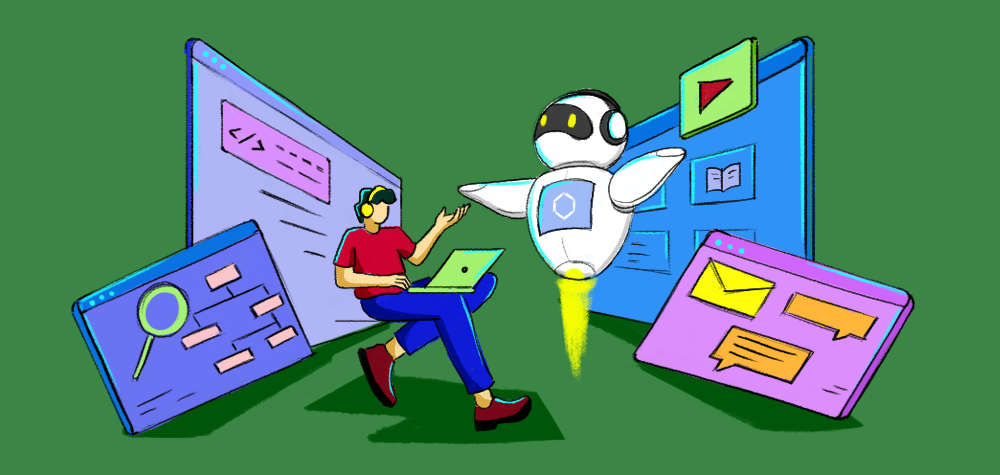
In recent months, the world has been taken by storm by ChatGPT, an AI chatbot that enables users to generate scripts, articles, workout charts, and more. This technology has endless applications across industries and, in this article, we'll look at how this modern technology can help service desks teams enhance service delivery and the customer experience.
What is ChatGPT and LLM?
ChatGPT is a machine learning model developed by OpenAI that uses a large language model (LLM) based on the Generative Pre-trained Transformer (GPT) architecture. Trained on enormous amounts of data from the internet, ChatGPT can generate human-like responses to text-based inputs and understands various languages.
LLMs are AI programs trained on vast amounts of textual data to understand how language works. They use advanced algorithms and deep learning techniques to recognize patterns and generate responses based on that understanding. LLMs can process and generate large amounts of text, making them useful for a wide range of applications beyond language translation and chatbots.
Now that we have a fundamental knowledge of what is ChatGPT, its general applications and LLMs, let's take a look at how users and the service desk in your organization can leverage the capabilities offered in the AI chatbot:
4 ways ChatGPT helps boost ITSM operations
1. Generate knowledge resources:
Knowledge base articles form the fundamentals of user self-service help resources because they enable users to find solutions, self-resolve IT issues, and understand procedures quickly. Service desk teams can leverage ChatGPT to generate detailed knowledge base articles which contributes to reducing L1 tickets. ChatGPT can also be utilized by service desk teams to produce detailed procedures for complex processes, such as server stack setup, and LAN issue troubleshooting, as well as to guide technicians to resolutions. The results are frequently fewer reopened tickets.
Quick solutions provided to your service desk include the capabilities to:
- Generate a knowledge base article to help a user reset their password.
- Enable a service desk agent to efficiently assist a user in configuring a design software to meet their specific needs.
- Develop a SOP to setup a server stack.
Here is an example of a prompt and the response generated by ChatGPT to provide a solution for when a laptop is unable to connect to the internet:
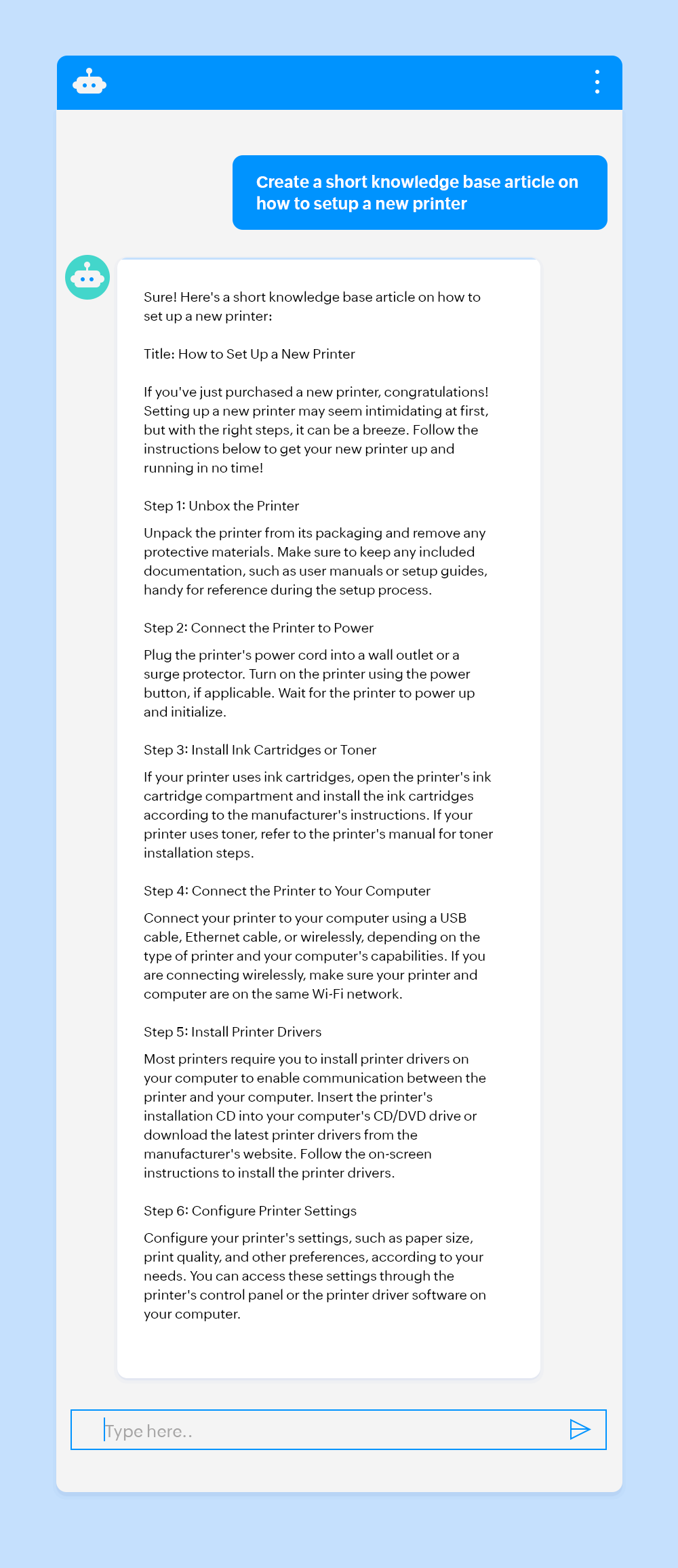

2. Assist in customer communications:
User experience relies heavily on timely response. According to Forrester Research, 77% of customers believe that it is the most crucial element in delivering a good customer experience. Given the significant workload, technicians can leverage ChatGPT to generate quick email responses to address user inquiries effectively.
Quick solutions provided to your service desk include the capabilities to:
- Write an email reply to stakeholders regarding the status of a change release.
- Generate an email response to the request from a user, such as:
"I'd like to have a written record of the service request I just made about my laptop submitted for repair. Could you please send me an email with the information?"
Here is an example of a prompt and response generated by ChatGPT to send to an end user as an email reply regarding the status of their laptop submitted for repair:
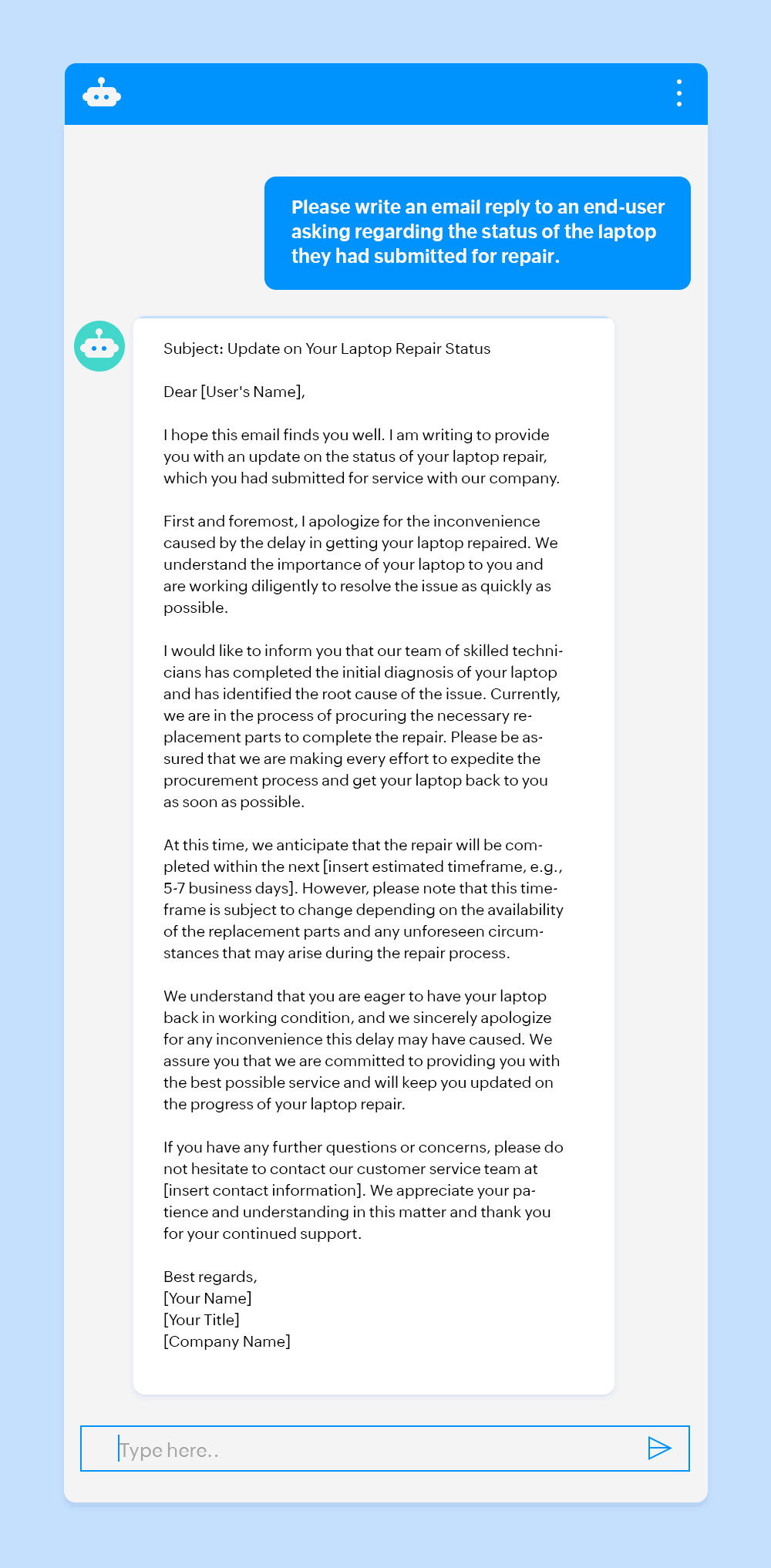
3. Automate scripting:
Service desk teams can leverage ChatGPT to overcome the common challenge of scripting in their daily operations. Utilizing ChatGPT, service desk teams can automate scripting and make scripting easier for technicians with limited or no knowledge of coding to make fine-grained and last-mile customizations. To ensure the scripts' functionality and accuracy, they can be tested in a sandbox environment before deploying them into the production environment. This approach can help IT teams streamline their workflow, reduce errors, and increase overall development efficiency.
Quick solutions provided to your service desk include the capabilities to:
- Utilize shell script to create a daemon for smb/CIFS
- Create a batch file to blacklist a software
Here is an example of a configuration script code for the Cisco Firepower 1000 firewall:

4. Initiate root cause analysis (RCA):
Identifying the root cause of an issue can be a time-consuming and exhaustive process for teams. Service desk teams can leverage ChatGPT to sift through large amount of data to find correlations or anomalies and suggest possible root causes. This frees up time for technicians and shortens the RCA process.
There are several RCA models that can be used. The choice depends on the organization and its needs, the complexity of the problem, and the resources available.
Some RCA models that can be generated using ChatGPT include:
- 5 why's model
- Fishbone diagram
- Kepner-Tregoe method
Quick solutions provided to your service desk include the capabilities to:
- Utilize the 5 why's table for network disruption that cause response times to exceed timeout value.
- Generate a RCA to determine a cascading failure due to queue overload of existing and insufficient database capacity.
Here are some examples for finding the root cause of a server stack crash:
5 why's method:
The 5 why's method helps identify the root cause of a problem within five steps. This method is used extensively in the IT field to deduce the cause and find a permanent fix for the issue.
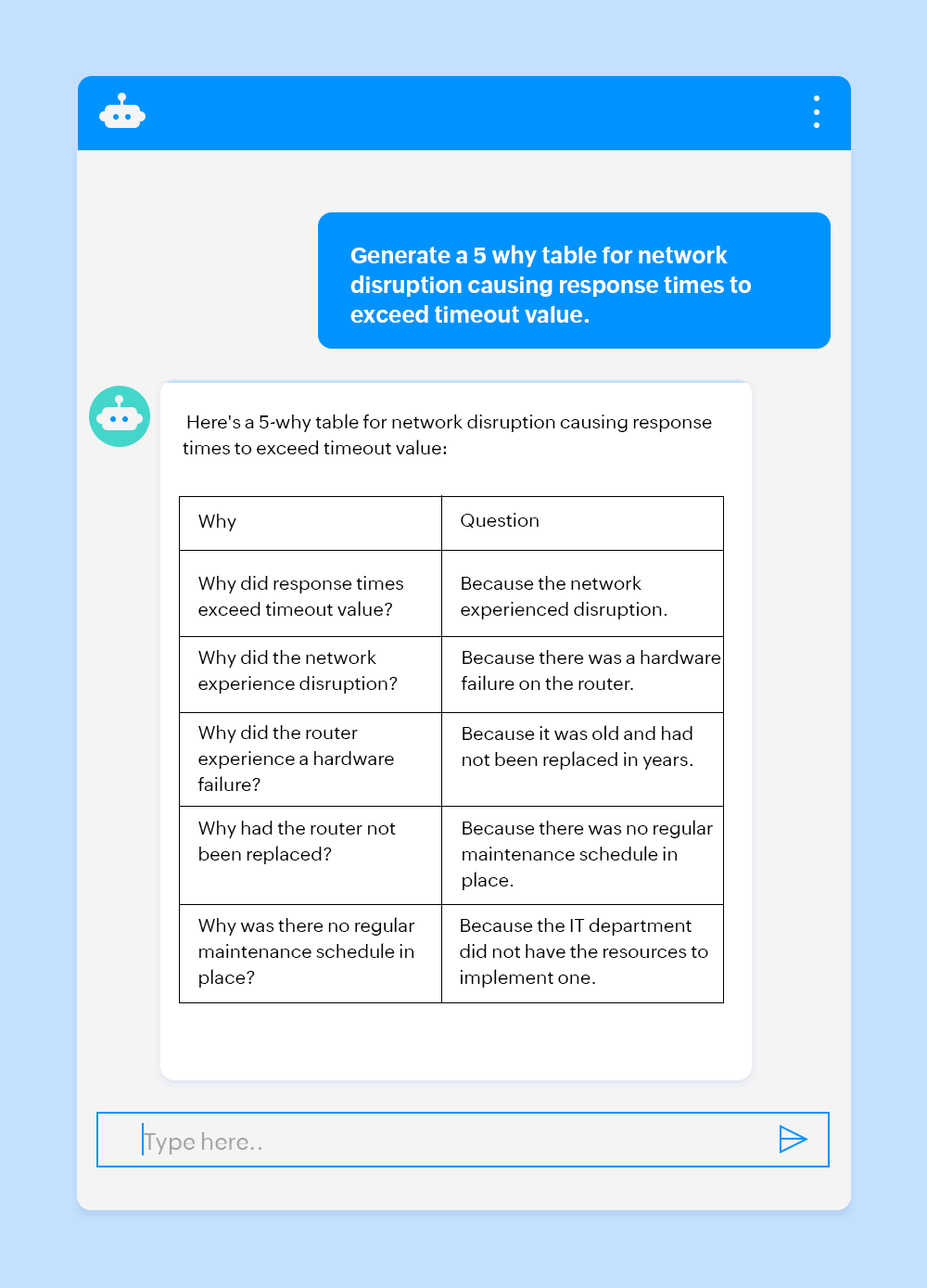
Fishbone diagram:
The fishbone diagram, also known as the Ishikawa diagram, is a quality management tool that helps identify the cause and provides a visual representation of the causes and
effects of an issue.
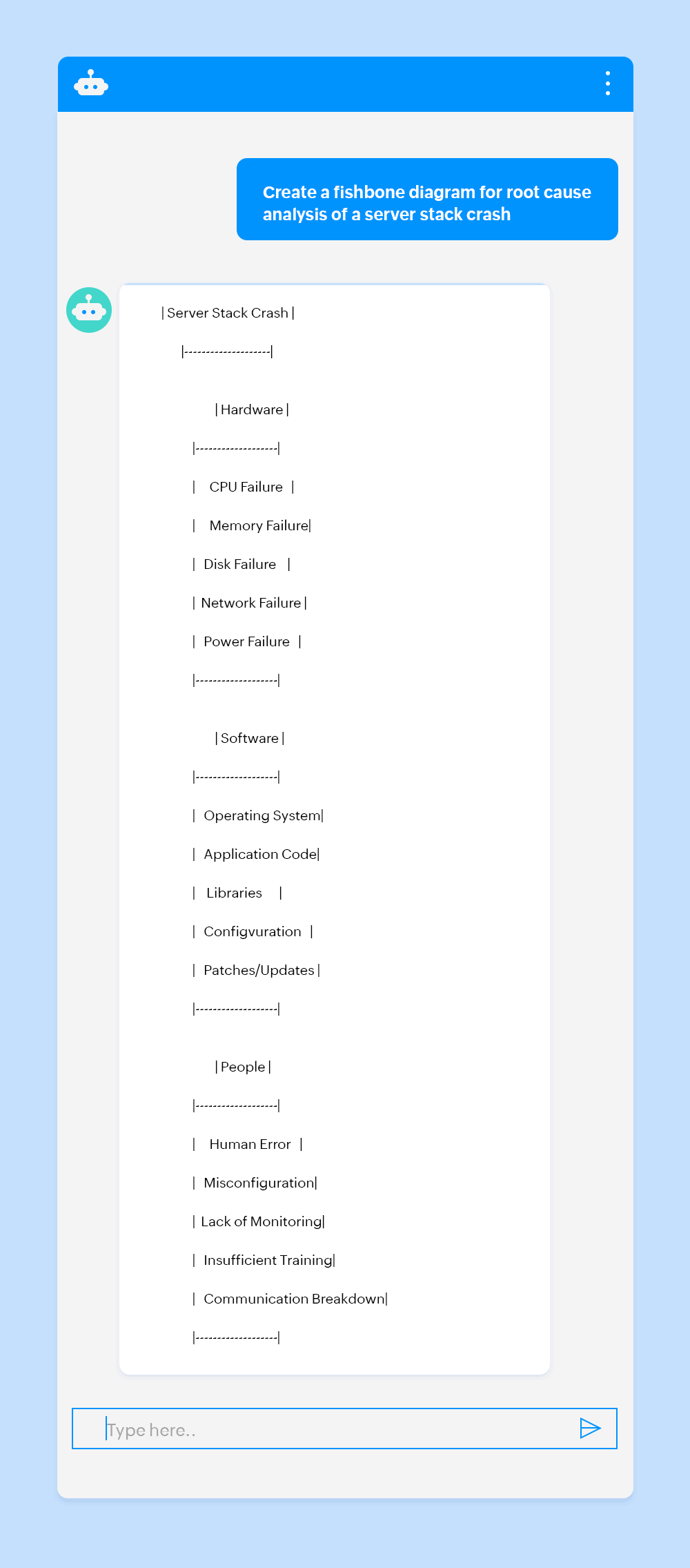
Kepner Tregoe method:
The Kepner Tregoe method is a problem-solving approach that identifies the underlying cause of an issue. It involves analyzing the various factors that contribute to the problem and eliminating the ones that are irrelevant, thereby isolating the key elements that need to be addressed.
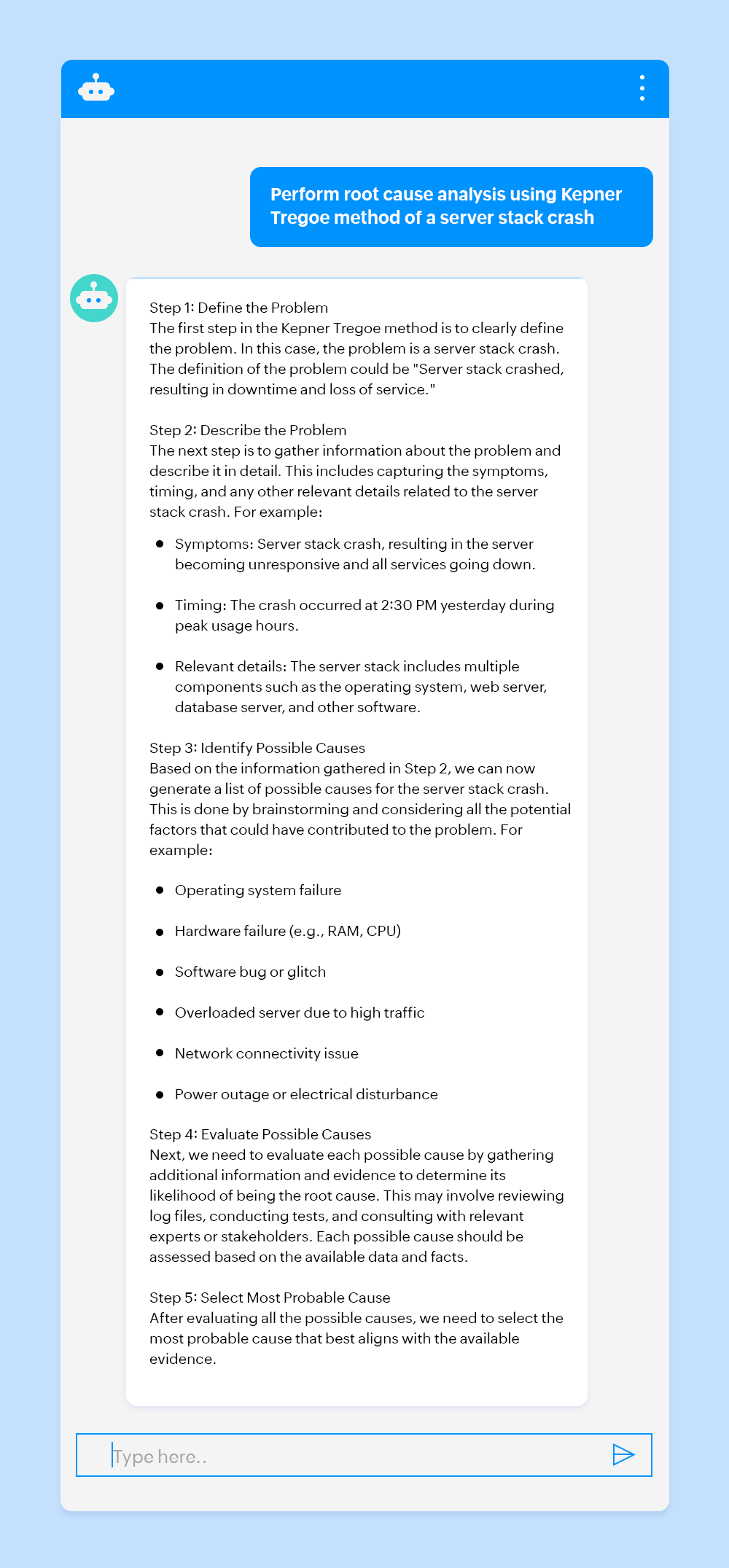
Summary
There is little doubt that ChatGPT and LLMs have disrupted, in a positive way, various industries, and has opened up new ways to improve efficiency and transform workflows. In this article we saw how ChatGPT can be leveraged by IT service desks to improve technician productivity by offloading tasks, like generating KB articles, sifting through large amounts of data to identify anomalies, drafting replies, and more.
Currently, these are some real-world applications of LLMs for service desk, with the technology still in it's infancy. But the full potential is yet to be seen. With these rapid advancements in technology, it is vital for service desk teams to adopt the latest trends to improve technician productivity and enhance user experience.
About the author

